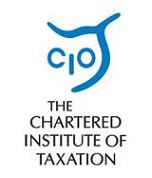CIOT warns of increasing divergence between Scottish and English taxpayers

The Chartered Institute of Taxation (CIOT) has warned that the income tax proposals announced by the finance secretary mean that taxpayers with income of more than £27,393 will pay more than those in other parts of the UK from this April.
The CIOT’s initial analysis of yesterday’s tax proposals also showed that Scots with income under this figure will pay less income tax than their UK counterparts as a result of the Scottish Government’s lower, 19p starter rate of tax. This will represent a saving of £21.
As with recent years, Scottish taxpayers with income that falls between the Scottish and UK higher rate thresholds will pay a marginal rate of tax of 53% (income tax and National Insurance) on this portion of their income.
This compares with 32% for taxpayers in the same income bracket elsewhere in the UK. It arises because the threshold for paying the lower 2% rate of National Insurance (the ‘upper earnings limit’) is linked to the UK higher rate of income tax.
Although some changes to UK income tax policy have already been announced – with the UK-wide tax free personal allowance and the threshold for the UK higher rate of income tax both increasing by 0.5% from April – the CIOT cautioned that further changes to Scottish tax policy could be needed after the UK Budget on 3 March to take into account of the impact of UK tax policy choices.
Alexander Garden, chair of the CIOT’s Scottish Technical Committee, said: “Although the only changes to Scotland’s Income Tax system have been in the form of inflationary increases to all bands with the exception of the top rate, the fact that Scottish taxes have been diverging from the rest of the UK since 2018 mean that there are still a number of differences that Scots should be aware of heading into the new tax year.
“Taxpayers with income of more than £27,393 will pay more income tax than those in the rest of the UK because of the higher rates of Scottish Income Tax that will apply to income above this level.
“Conversely, those with income below this will pay less income tax, with a maximum yearly saving of £21, because of the lower starter rate of income tax that applies in Scotland.
“The UK-wide personal allowance (the amount of income that can be earned free of income tax) will also increase in April by £70 to £12,570. This should provide a small benefit to most taxpayers.
“Once again, the fact that Scottish Income Tax rates are not aligned with the UK National Insurance regime will mean that taxpayers with income between £43,663 and £50,270 will pay a marginal tax rate of 53 per cent on this portion of their income, compared to 32 per cent in the rest of the country.”
On the prospect of further changes to the Scottish tax regime being needed, Mr Garden added: “Like last year, Scotland’s full tax picture won’t be known until the Chancellor’s Budget on 3 March.
“Until then, it’s not possible to rule out the need for further changes to Scottish taxes before the new tax year starts on 5 April.
“For example, both the UK and Scottish governments have had a tendency in recent years to mirror each other’s property tax changes. So if the Chancellor decided to extend the UK Stamp Duty holiday beyond March this year, Scottish Ministers might feel that it is appropriate to revisit their proposal to end the temporary increase to the nil rate band of LBTT at the end of March.
“There needs to be better engagement between both governments to make sure that we don’t encounter such challenges in future years.”









